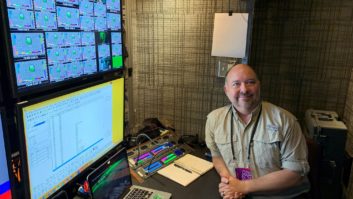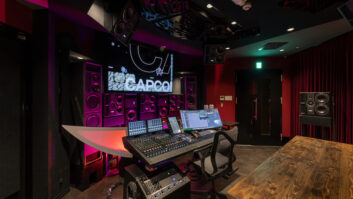
Players look down at their world in Age of Empires: Asian Dynasties.
Although there’s no question that the videogames getting the most attention from both gamers and the press these days are the latest generation of elaborate, sophisticated and realistic “shooters” for the Xbox 360 and PlayStation 3, there are still millions of players around the globe who love nothing more than to immerse themselves in the fantastic worlds offered by (primarily) PC-based real-time strategy (RTS) games. These, too, have come a long way in recent years, boasting ever-more impressive visuals and better sound (along with stronger stories). To say that they can’t realistically “compete” with popular (and much-hyped) games such as BioShock, Assassin’s Creed and Call of Duty 4, is to miss the point; that’s an apples-and-oranges comparison. RTS games continue to be a vital part of the industry.
One of the most successful RTS franchises of the past decade is Ensemble Studios/Microsoft Game Studios’ Age of Empires, which, in its third iteration, continues to grow thanks to such best-selling expansion packs as The War Chiefs and last fall’s Asian Dynasties — the latter produced with Maryland-based Big Huge Games (itself best known for the RTS game Rise of Nations). Asian Dynasties takes the base AOEIII, in which players strategically manage different European powers and build armies and face various obstacles and foes, and then grafts on a number of historic Asian civilizations, including India, China and Japan, so Japanese samurai can face off against Dutch colonialists and other improbable but intriguing situations.
Sound design for the Asian Dynasties expansion pack was by Big Huge Games audio director Devin Hurd, who has more than a decade of experience working in game sound since his days at Dartmouth’s Electro-Acoustic Music program. Out of college, the Boulder, Colo., native got a job with a friend’s start-up company in Seattle called Orca Games. “I saw it as an opportunity to do sound and music as a living, so I got my start there, and seven companies later I’m still doing it,” he says with a laugh. His journey has involved stints at Humongous Entertainment, Boss Game Studios, Kush Games and others, working on everything from racing games to sports titles — and now, with Big Huge, on RTS and RPGs (role-playing games). “I’ve always admired their games,” he says, “and I’d always wanted to work on real-time strategy games, so it all fell into place.”
The sound requirements of every style of videogame vary, and RTS games have their own peculiarities in that regard. As Hurd notes, “The perspective is different on RTS titles as compared to a shooter, where you’re right there in the action. With RTS games, you’re sort of looking down on the world and it’s like you’re the deity and the player. There’s really the idea that the sounds sort of funnel upward to where you are. So the sense of space is very different.”

Big Huge Games audio director Devin Hurd
Obviously when, as a player, a scene is unfolding on a bigger scale and is outdoors, less-detailed sound design is needed — you’re not hearing every shell-casing hit the floor in some bombed-out building. “There’s a lot less concern with reverb and reverb tails,” Hurd offers, “and the space is so open that I do things to make it sound and feel like it’s in an open environment. I’ll use a little convolution to make it feel like it’s outdoors.”
In the case of the Asian Dynasties expansion, Hurd had to work somewhat within sonic parameters established in the original Age of Empires III by Ensemble Studios music and sound director Stephen Rippy. “I wanted to stay consistent with their feel,” Hurd says. “There’s a language of the game, so to speak, so the key is to match up with what’s there.
“I talked to Stephen and got a list of what they had done before — what the format and duration was for the assets [anything animated], because I wanted to make sure that anything we added wouldn’t be too jarring or too much a departure from what the players would expect,” he continues. “Still, we certainly did some new things and we also added some Asian flair to things, and that was fun.
“I like working on expansion packs because when you start you already have a base code that works; you’re not really shooting in the dark and that easily cuts a year to a year-and-a-half off the development time.”
With RTS games, a crucial part of the sound design is establishing the ambiences of the different scene/settings. Hurd spent countless hours toiling over each environment, layering sounds — pulled from a combination of libraries and his own original recordings — that would make the gameplay more evocative. “I’d almost compose with a multitrack editor something that would loop, but be fairly long and have a lot of fresh material in it so it doesn’t get boring,” he says. “I try to do a lot editing [of sound samples], because I find that after all these years, I actually recognize a lot of the source material that other people use. There’s a sheep sound I swear I hear in every game. [Laughs] I don’t want to be the guy who uses that sample. So I do a lot of layering and I’ll also alter them, trying to give the sounds a unique character. I think the environment sounds in Asian Dynasties came off really well. There’s some pretty dense layering, but the trick is to try to make it not sound like a thick mix, so you’ve got to be careful with where you’re placing things, and you do what you can to put some space in it because you don’t want it to just be a noisy din, which can be distracting.”

As for Hurd’s primary sound design tool, “I do a lot of it in Sonic Foundry’s Vegas,” he says. “It’s a pretty straight-ahead multitrack editor that also supports video, so it allowed me to do a lot of the cinematic work for the cut scenes in the game, as well.”
Then within the different ambiences, obviously there are other types of specific action that demand sound design with various levels of detail. “In this game, the creatures and new animals required a lot. There’s a giant squid that was fun to work on. I mean, what does a giant squid sound like? I ended up using some whale and some lion; you mix that with water splashing and it sounds pretty good. That’s a kind of obvious example of sound design, but some of the best things in the game are little details that don’t necessarily jump out at people and aren’t spectacular sounds, but they give a nice context to what’s going on.
“Like there’s a scene with some dialog on a ship out at sea, and as the ‘camera’ is coming into the ship I did some things with the ambient ocean waves so it sort of cross-fades from being out on the ocean to being heard from on the deck of the ship, and then you bring in the creaking of the ship and other sounds. There are a lot of subtle details that enhance the big event sounds, so that when something blows up it’s not blowing up in a vacuum; it actually feels like it’s in that environment that you’ve already established.”
Speaking more generally about the technical requirements of game sound design and integration, Hurd notes, “The tools are getting so refined now. There are things I can do with middleware that five or six years ago I had to beg programmers to supply me with. Age of Empires used an older engine, so I had to deliver a lot of raw WAV and MP3 assets, and then they were plugged in behind the scenes. The format submitted was largely dictated by available memory and disk space. My first choice is to supply stereo WAV files for all assets and then scale back in a manner that meets memory requirements while doing the least damage to sonic fidelity. One of the strengths of the Age of Empires III core engine is that there was no additional overhead for playing back files of different formats and resolutions, so it was possible to employ some trial and error.
“Some of the stuff I’m working on now is using a lot more sophisticated middleware,” he continues. “Much of the industry is moving toward FMOD, and with good reason: FMOD has consolidated the best features of game-specific middleware for audio. It’s particularly useful for handling a lot of the cross-platform differences behind the scenes so that sound designers and programmers can expect a fixed set of assets to work the same way regardless of the implementation requirements unique to Sony, Nintendo or Microsoft platforms. It also empowers the sound designer to build complicated, multilayer and randomized sound events that only require the programmer to fire a start-sound event. Playing back a single pre-recorded asset is increasingly an old-school approach to game audio as the tools allow for real-time mixing of multiple component parts at run time.”
The integration of sounds was done internally at Big Huge, “but I wasn’t directly involved with integration on this game,” Hurd says. “I spent a couple of years programming, so I understand that world, and knowing what’s possible and desirable definitely affects some of the choices I make.”
With Asian Dynasties behind him, Hurd has a few other projects percolating — but as is typical in the game world, he cannot discuss any of the particulars. “I’m working on a role-playing game and another title that’s totally under wraps,” he says conspiratorially. “They’re very contrasting projects and really exciting.”







